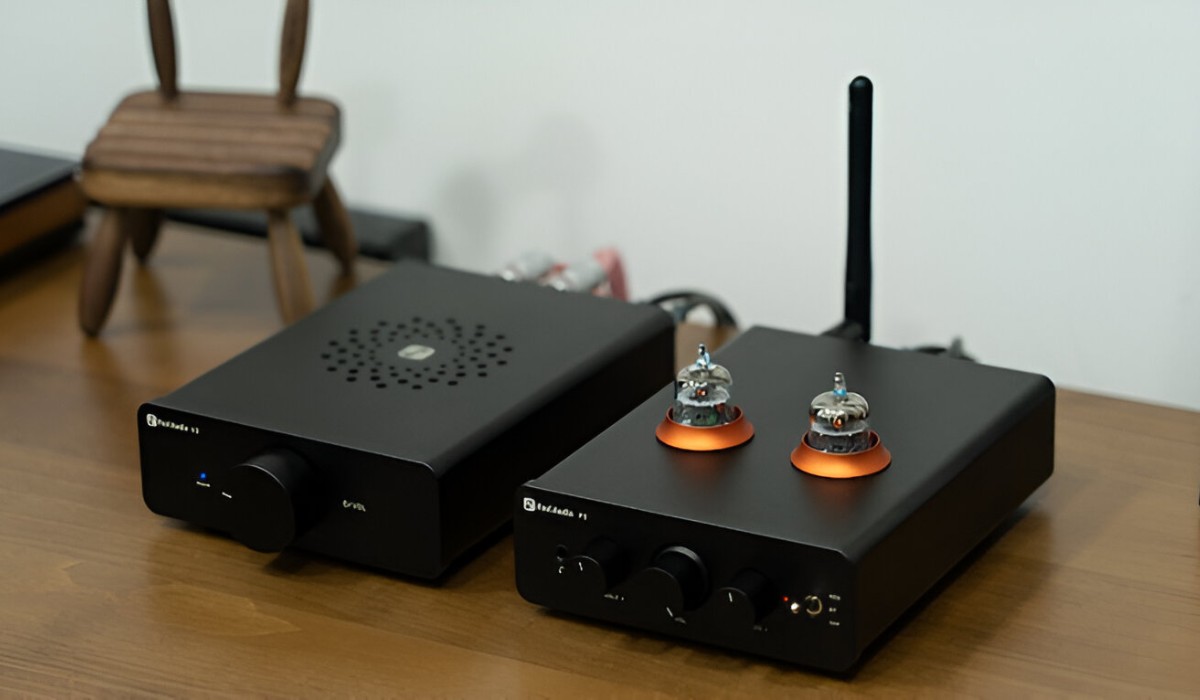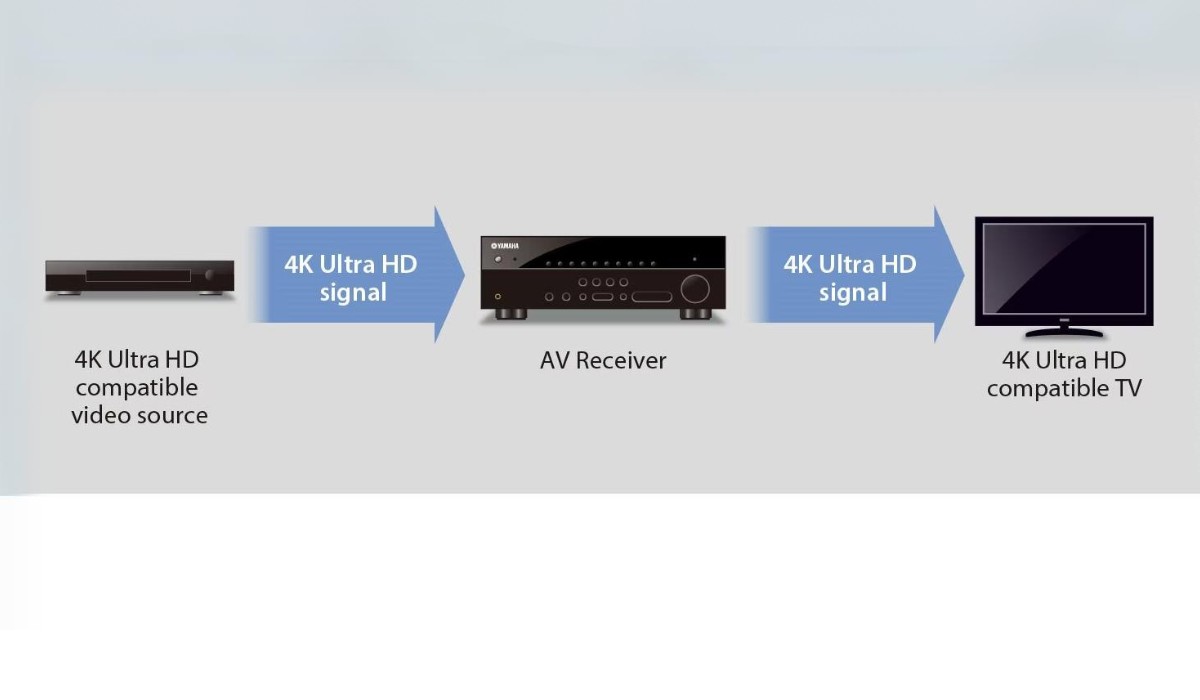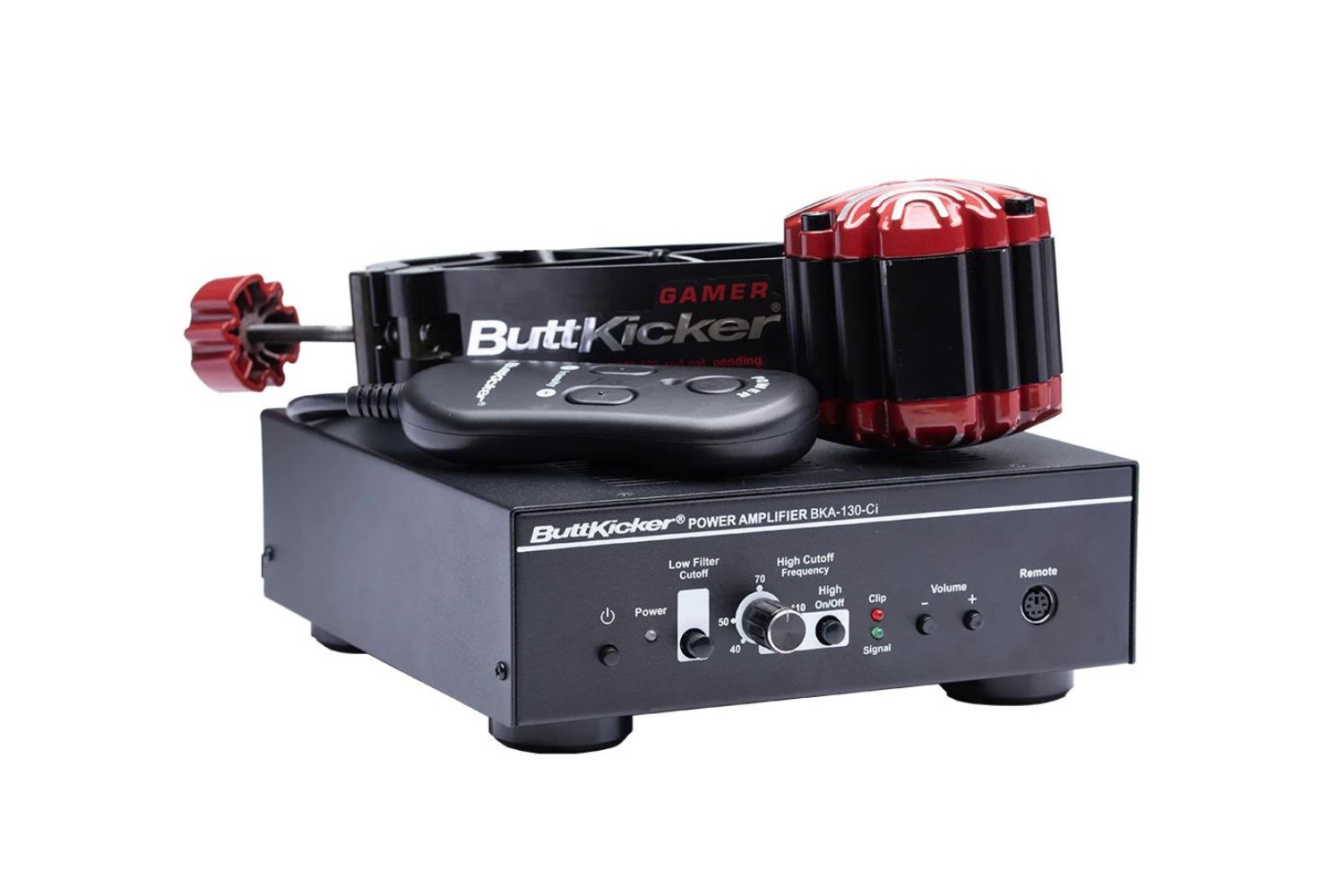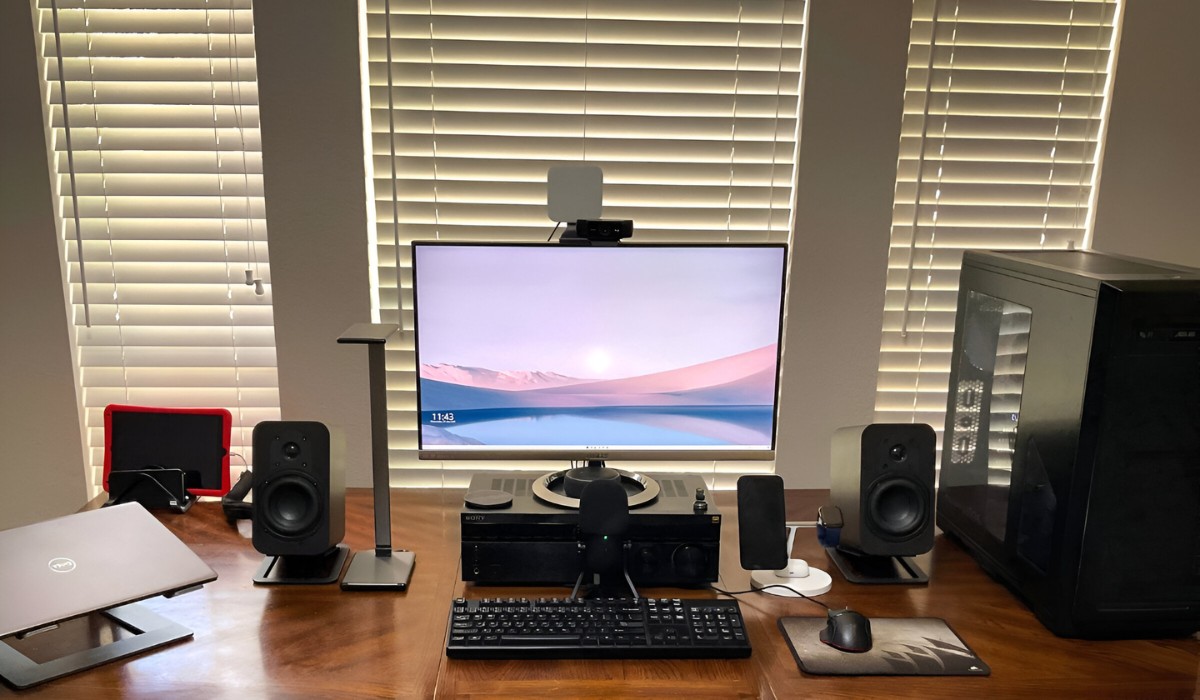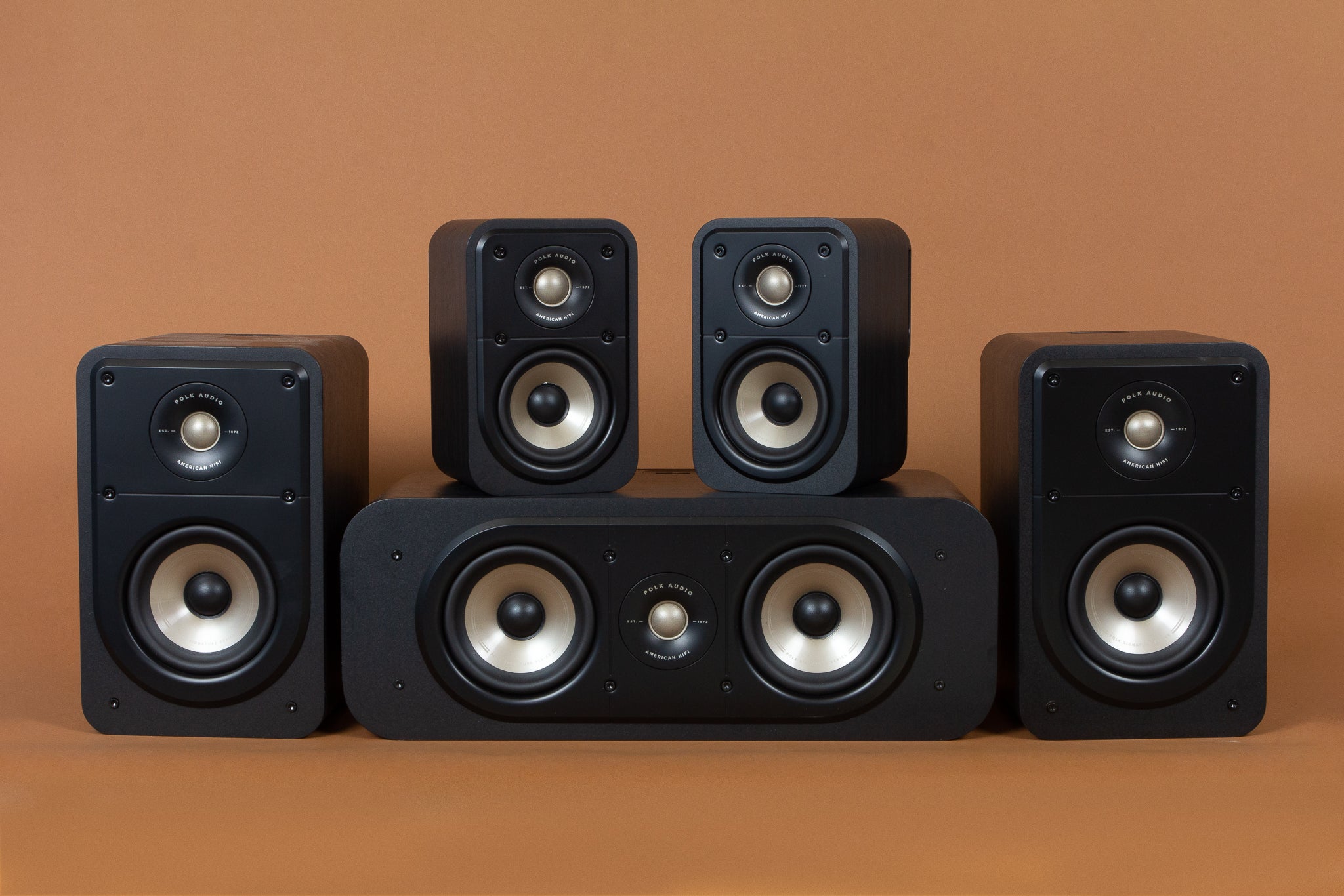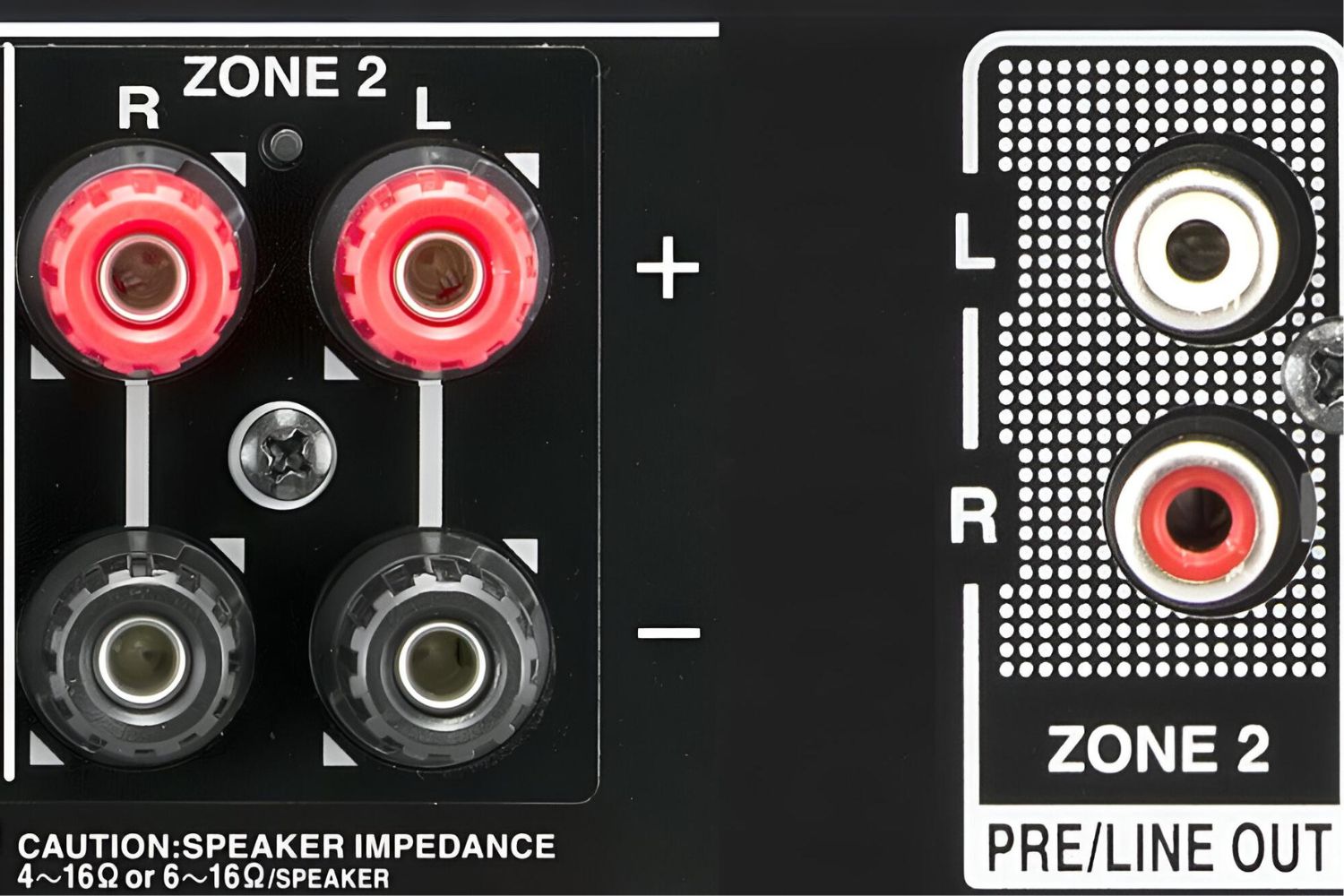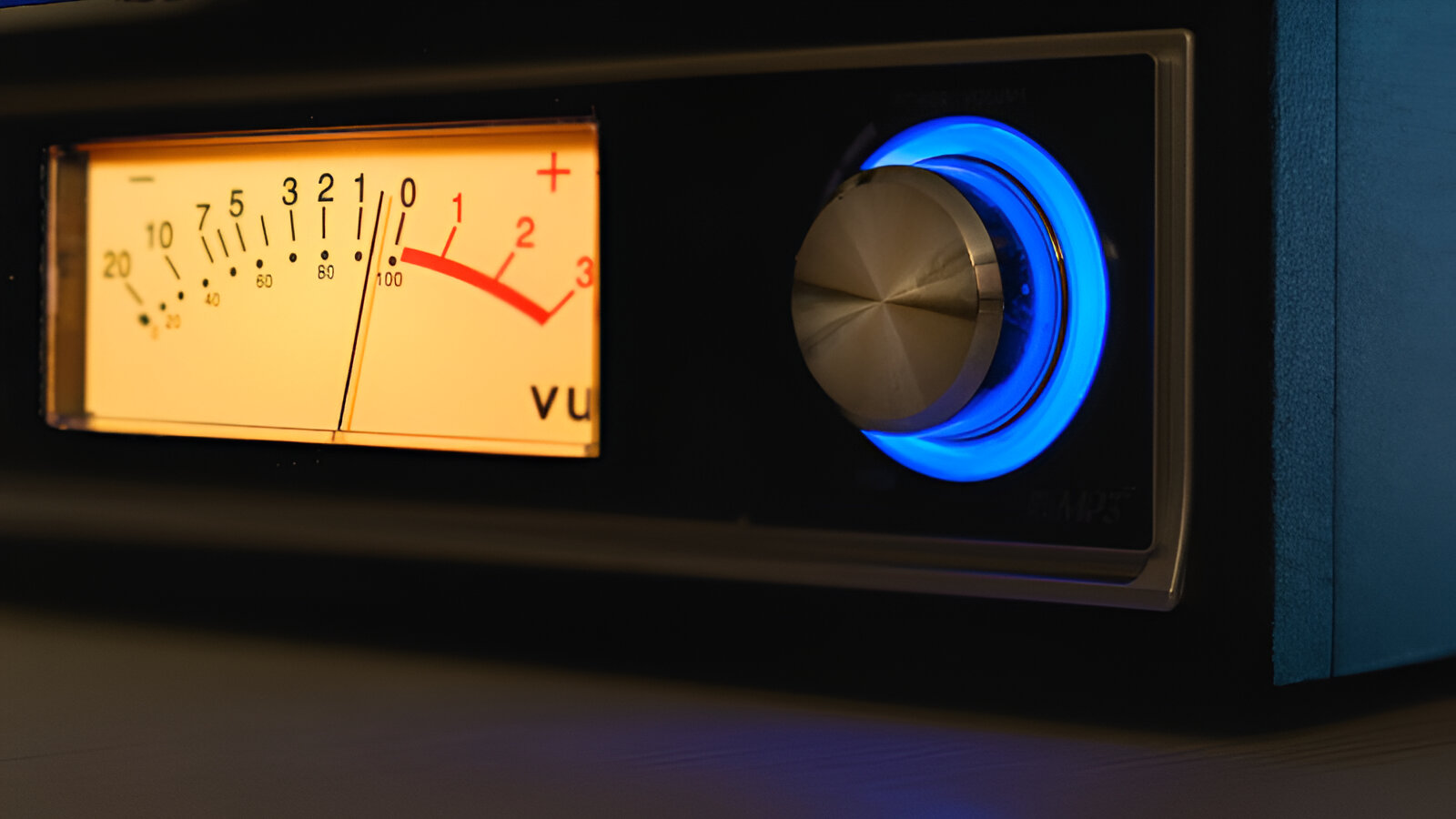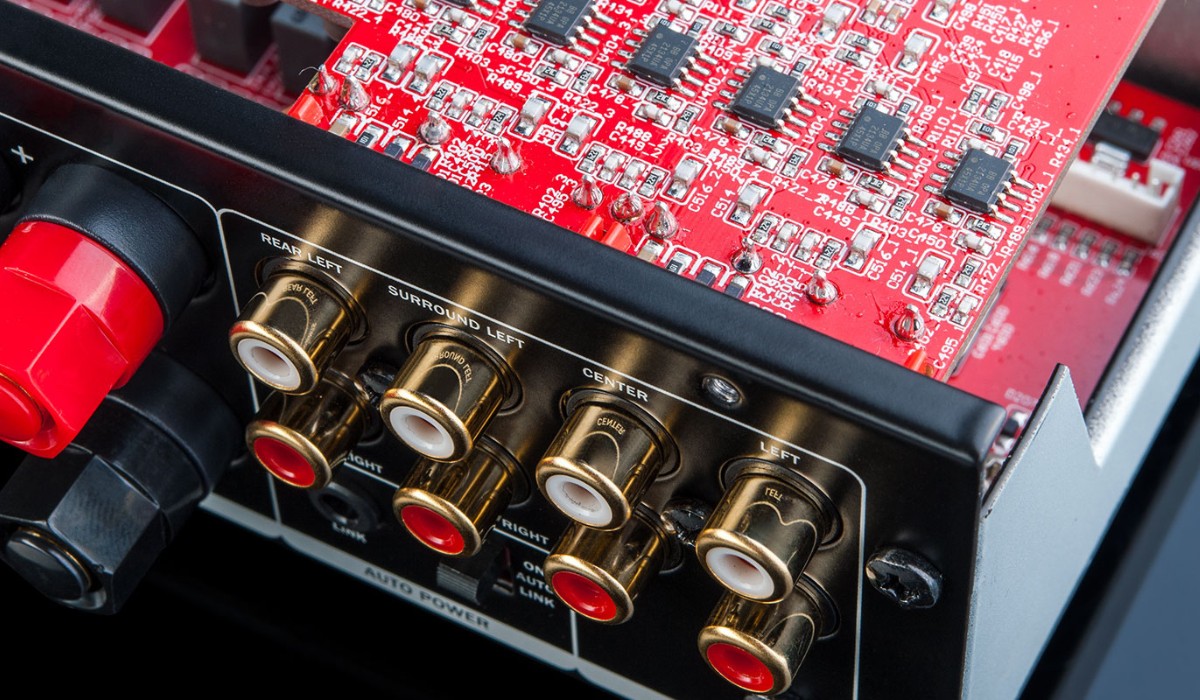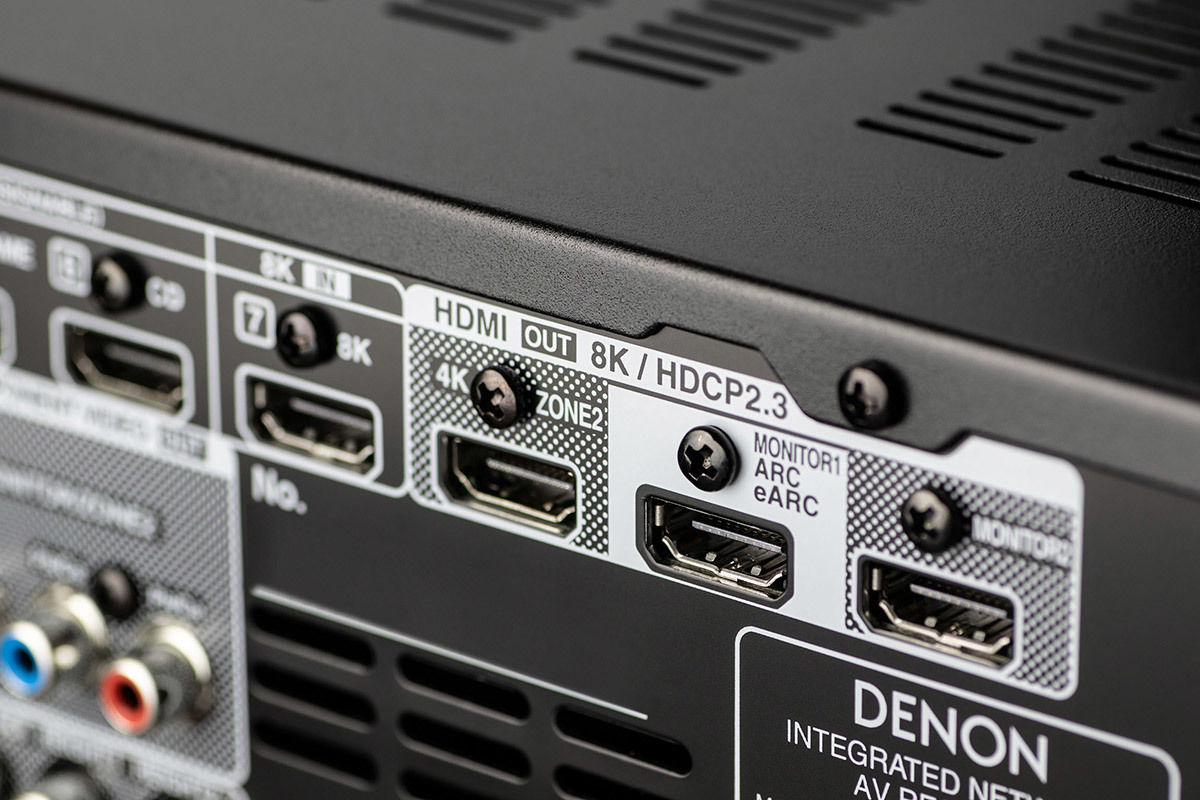Introduction
When it comes to creating a captivating home theater experience, an AV receiver plays a pivotal role in delivering immersive audio and video performance. Understanding the specifications of an AV receiver is essential for making an informed purchasing decision. From power output to connectivity options, each specification carries significant implications for the overall functionality and compatibility of the AV receiver. By unraveling the meanings behind these specifications, consumers can gain a deeper insight into the capabilities and potential of their prospective AV receiver.
The specifications of an AV receiver provide valuable insights into its performance capabilities, ensuring that it aligns with the specific needs and preferences of the user. With a myriad of technical jargon and numbers, deciphering these specifications may seem daunting at first glance. However, delving into the intricacies of power output, impedance, signal-to-noise ratio, and other key specifications can empower consumers to select an AV receiver that seamlessly integrates with their home entertainment setup.
In this comprehensive guide, we will dissect the essential specifications of an AV receiver, shedding light on their significance and practical implications. From power output and impedance to surround sound formats and connectivity features, each specification contributes to the overall functionality and versatility of the AV receiver. By demystifying the technical aspects and decoding the meanings behind these specifications, consumers can navigate the market with confidence, ultimately enhancing their home entertainment experience.
Join us as we embark on a journey through the intricate world of AV receiver specifications, unraveling the complexities and uncovering the practical implications that underpin these technical details. Whether you are a seasoned audiophile or a novice enthusiast, this guide aims to demystify the specifications of AV receivers, empowering you to make informed decisions and unlock the full potential of your home theater setup.
Power Output
The power output specification of an AV receiver, typically measured in watts per channel, is a fundamental indicator of its performance capabilities. This specification denotes the amount of electrical power the receiver can deliver to the connected speakers, directly impacting the volume and clarity of the audio playback. Understanding the power output is crucial for ensuring compatibility with the speakers and the desired listening environment.
When examining the power output of an AV receiver, it is essential to consider both the number of channels Driven (e.g., 5.1, 7.1) and the impedance of the speakers. Higher power output allows for greater volume levels and dynamic range, catering to larger rooms or systems with demanding speakers. Additionally, a higher power output provides headroom, ensuring that the receiver can handle transient peaks in the audio signal without distortion.
Impedance matching is another crucial aspect related to power output. The impedance rating of the speakers should align with the capabilities of the AV receiver to ensure optimal performance and prevent potential damage to the equipment. It is imperative to verify that the receiver’s power output is compatible with the impedance range of the speakers, as mismatched impedance can lead to inefficient power transfer and compromised audio quality.
Furthermore, the power output specification influences the overall sound quality and dynamic range of the audio playback. Higher power output enables the AV receiver to drive speakers with greater authority, delivering a more immersive and impactful listening experience. Whether it’s the nuanced details of a classical symphony or the thunderous explosions in a blockbuster movie, adequate power output ensures that the audio reproduction remains faithful to the source material, capturing the full spectrum of sonic nuances.
Ultimately, the power output specification serves as a critical determinant of the AV receiver’s ability to drive speakers effectively and reproduce audio with fidelity and impact. By comprehending the implications of power output and its correlation with speaker impedance, consumers can make informed decisions when selecting an AV receiver that aligns with their audio preferences and room acoustics, ultimately elevating their home entertainment experience.
Impedance
Impedance is a crucial specification that profoundly influences the interaction between the AV receiver and the connected speakers. Expressed in ohms, impedance represents the resistance to the flow of electrical current within the speaker system. Understanding the impedance rating of both the receiver and the speakers is essential for ensuring compatibility and optimal performance.
Matching the impedance of the speakers with that of the AV receiver is imperative to prevent potential issues such as overloading the amplifier or compromising the audio quality. When the impedance of the speakers is too low in relation to the receiver’s capabilities, it can strain the amplifier, leading to overheating and distortion. Conversely, speakers with a higher impedance than the receiver’s rating may result in insufficient power delivery, limiting the dynamic range and overall volume levels.
Furthermore, the concept of nominal impedance plays a pivotal role in determining the compatibility between the AV receiver and the speakers. The nominal impedance, typically indicated on the speaker specifications, represents the average impedance value over the speaker’s frequency range. It is essential to ensure that the nominal impedance of the speakers aligns with the impedance capabilities of the AV receiver to facilitate optimal power transfer and efficient operation.
Moreover, understanding the implications of impedance enables users to make informed decisions when configuring their audio systems. For instance, when utilizing multiple speakers in a system, the combined impedance should be considered to prevent impedance mismatch and ensure that the AV receiver can effectively drive all connected speakers without encountering issues related to power distribution and stability.
By delving into the intricacies of impedance and its impact on the interaction between AV receivers and speakers, consumers can navigate the selection process with confidence, ensuring that their audio system operates harmoniously while delivering uncompromised sound quality and performance. Understanding the impedance specifications empowers users to create cohesive and efficient audio setups that harness the full potential of their AV receivers and speakers, ultimately enriching their home entertainment experience.
Signal-to-Noise Ratio (SNR)
The Signal-to-Noise Ratio (SNR) is a critical specification that reflects the quality of the audio signal reproduced by an AV receiver in relation to the background noise level. Expressed in decibels (dB), the SNR quantifies the difference between the desired audio signal and the inherent electrical noise present in the system. A higher SNR value signifies a superior ability to reproduce audio with clarity and fidelity, minimizing the impact of unwanted noise.
When evaluating the SNR of an AV receiver, it is essential to consider its implications on the overall audio performance. A higher SNR indicates that the receiver can faithfully reproduce the subtle details and nuances of the audio content, preserving the dynamic range and ensuring that the quieter passages are rendered with precision and transparency. This is particularly crucial for music enthusiasts and audiophiles who seek an unadulterated listening experience, free from intrusive background noise.
Furthermore, the SNR directly influences the receiver’s ability to handle low-level signals, such as delicate musical passages or whispered dialogue in movies, without introducing perceptible noise or distortion. This is especially significant in quiet scenes or during soft musical passages, where a high SNR ensures that the receiver maintains a clean and unobtrusive audio playback, capturing the full emotional impact of the content.
Moreover, the SNR specification serves as a key determinant of the receiver’s ability to accurately reproduce the spatial and ambient details present in multi-channel audio formats. By minimizing the impact of noise, a high SNR contributes to a more immersive and enveloping soundstage, allowing users to experience the full breadth of the audio content with heightened realism and precision.
Understanding the significance of SNR empowers consumers to make informed decisions when selecting an AV receiver, ensuring that their chosen model can deliver audio playback with exceptional clarity and fidelity. By considering the SNR specification alongside other technical details, users can ascertain the receiver’s capability to reproduce audio content with accuracy and finesse, ultimately enriching their home theater experience with uncompromised sound quality.
Frequency Response
The frequency response specification of an AV receiver delineates its ability to reproduce audio across the audible frequency spectrum, typically expressed in Hertz (Hz). This specification encompasses the range of frequencies over which the receiver can accurately reproduce sound, thereby influencing the tonal balance and fidelity of the audio playback. Understanding the frequency response is pivotal for assessing the receiver’s capability to faithfully reproduce the full spectrum of audio content, from deep bass to crisp treble.
When examining the frequency response of an AV receiver, it is crucial to consider the stated range and its implications on audio reproduction. A wider frequency response range signifies that the receiver can faithfully reproduce both the lower bass frequencies and the higher treble frequencies, ensuring a comprehensive and balanced sonic presentation. This is particularly significant for music enthusiasts and cinephiles who seek a nuanced and immersive audio experience that captures the full spectrum of sonic nuances.
Furthermore, the frequency response specification influences the receiver’s ability to reproduce the spatial and ambient details present in multi-channel audio formats, contributing to a more immersive and enveloping soundstage. By accurately reproducing the full frequency range, the receiver can convey the spatial cues and atmospheric elements inherent in the audio content, enhancing the overall realism and depth of the listening experience.
Moreover, a flat and extended frequency response is indicative of a receiver’s capacity to preserve the tonal balance and timbral accuracy of the audio content, ensuring that each instrument and vocal nuance is faithfully reproduced without coloration or distortion. This is particularly crucial for discerning listeners who prioritize accurate audio reproduction and seek to experience music and movie soundtracks as the creators intended.
Understanding the implications of frequency response empowers consumers to make informed decisions when selecting an AV receiver, ensuring that their chosen model can deliver a comprehensive and balanced sonic presentation across the audible frequency spectrum. By considering the frequency response specification alongside other technical details, users can ascertain the receiver’s capability to faithfully reproduce audio content with precision and fidelity, ultimately enriching their home entertainment experience with uncompromised sound quality.
Total Harmonic Distortion (THD)
The Total Harmonic Distortion (THD) specification of an AV receiver is a crucial indicator of its ability to reproduce audio without introducing unwanted distortion. Expressed as a percentage, THD quantifies the extent to which the electrical signal is altered or distorted during the amplification process. Understanding the implications of THD is essential for assessing the receiver’s capacity to deliver clean and faithful audio reproduction across various volume levels and dynamic ranges.
When evaluating the THD of an AV receiver, it is imperative to recognize its impact on the fidelity and integrity of the audio playback. A lower THD value indicates that the receiver can reproduce audio with minimal distortion, preserving the original tonal characteristics and harmonic content of the source material. This is particularly significant for audiophiles and discerning listeners who prioritize unadulterated audio reproduction and seek to experience music and movie soundtracks with uncompromised fidelity.
Furthermore, the THD specification influences the receiver’s ability to handle dynamic audio content, such as transient peaks and sudden volume changes, without introducing perceptible distortion or coloration. By maintaining a low THD value, the receiver ensures that the audio playback remains faithful to the original recording, capturing the nuances and subtleties of the content with precision and transparency.
Moreover, a low THD value is indicative of the receiver’s capacity to reproduce complex musical passages and cinematic soundscapes with clarity and accuracy, preserving the spatial and tonal intricacies of the audio content. This is essential for creating an immersive and engaging listening environment where the sonic nuances and dynamic range of the content are faithfully rendered without the imposition of unwanted artifacts or distortion.
Understanding the implications of THD empowers consumers to make informed decisions when selecting an AV receiver, ensuring that their chosen model can deliver clean and faithful audio reproduction across various volume levels and dynamic ranges. By considering the THD specification alongside other technical details, users can ascertain the receiver’s capability to reproduce audio content with precision and fidelity, ultimately enriching their home entertainment experience with uncompromised sound quality.
Channels
The specification of channels in an AV receiver signifies the number of discrete audio output channels available for driving speakers in a home theater setup. Common channel configurations include 2.0, 2.1, 5.1, 7.1, and more, with the first digit denoting the number of main channels and the second digit representing the presence of a subwoofer channel for low-frequency effects. Understanding the significance of channels is essential for configuring a multi-channel audio system that caters to the spatial and immersive requirements of various audio and video content.
When evaluating the channels of an AV receiver, it is imperative to consider the implications of different channel configurations on the overall audio performance and spatial presentation. Multi-channel configurations, such as 5.1 and 7.1, enable a more immersive and enveloping audio experience by distributing sound across multiple speakers, creating a sense of spatial depth and realism. This is particularly advantageous for movie soundtracks and gaming audio, where the spatial positioning of sound effects and ambient cues enhances the immersive qualities of the content.
Furthermore, the presence of dedicated channels for low-frequency effects, as denoted by the “.1” in configurations such as 5.1 and 7.1, ensures that the AV receiver can effectively reproduce deep bass frequencies with impact and precision. This contributes to a more balanced and dynamic audio presentation, allowing users to experience the full spectrum of sonic nuances, from subtle low-frequency rumbles to powerful bass transients, with clarity and authority.
Moreover, understanding the implications of channel configurations empowers consumers to tailor their audio systems to the specific requirements of their entertainment spaces and audio preferences. Whether it’s creating a dedicated home theater environment or a multi-purpose entertainment setup, selecting the appropriate channel configuration enables users to harness the spatial and immersive qualities of multi-channel audio, ultimately enriching their audiovisual experiences with heightened realism and impact.
By comprehending the significance of channels and their impact on spatial audio reproduction, consumers can make informed decisions when selecting an AV receiver, ensuring that their chosen model aligns with the spatial and immersive requirements of their audio and video content. By considering the channel specification alongside other technical details, users can ascertain the receiver’s capability to deliver a compelling and enveloping audio experience, ultimately enhancing their home entertainment setup with immersive and spatially accurate sound reproduction.
Surround Sound Formats
The specification of surround sound formats in an AV receiver encompasses a diverse array of audio encoding and decoding technologies designed to deliver immersive and spatially accurate audio experiences. These formats, such as Dolby Atmos, DTS:X, and Auro-3D, are engineered to create a sense of envelopment and realism by spatially positioning audio elements within a multi-channel speaker setup. Understanding the implications of surround sound formats is essential for unlocking the full potential of multi-channel audio content and creating captivating audio experiences.
When evaluating the surround sound formats supported by an AV receiver, it is crucial to consider their compatibility with various audio and video sources, including Blu-ray discs, streaming content, and gaming platforms. Each surround sound format offers unique capabilities, such as object-based audio rendering, height channel support, and advanced sound processing algorithms, contributing to a more immersive and realistic audio presentation.
Furthermore, the support for advanced surround sound formats enables the AV receiver to decode and process multi-channel audio content with precision and spatial accuracy, ensuring that the sonic nuances and spatial cues present in the content are faithfully reproduced within the listening environment. This is particularly advantageous for movie soundtracks, where the spatial positioning of sound effects and ambient details enhances the immersive qualities of the cinematic experience, transporting viewers into the heart of the action.
Moreover, the presence of support for emerging surround sound formats, such as Dolby Atmos and DTS:X, signifies the AV receiver’s capability to accommodate the evolving landscape of audio technologies, future-proofing the audio system against obsolescence and ensuring compatibility with upcoming audiovisual content. By embracing these advanced surround sound formats, users can create a compelling and future-ready audio setup that delivers unparalleled immersion and spatial fidelity.
Understanding the implications of surround sound formats empowers consumers to make informed decisions when selecting an AV receiver, ensuring that their chosen model supports the desired audio technologies and aligns with the spatial and immersive requirements of their entertainment spaces. By considering the surround sound format specification alongside other technical details, users can ascertain the receiver’s capability to deliver captivating and spatially accurate audio experiences, ultimately enriching their home entertainment setup with immersive and realistic sound reproduction.
Video Inputs and Outputs
The specification of video inputs and outputs in an AV receiver encompasses a range of connectivity options designed to facilitate seamless integration with various audiovisual sources and display devices. These inputs and outputs, including HDMI, composite, component, and more, play a pivotal role in routing video signals from source components, such as Blu-ray players and gaming consoles, to the display, while also enabling advanced video processing and upscaling capabilities. Understanding the implications of video connectivity options is essential for creating a versatile and future-ready audiovisual setup.
When evaluating the video inputs and outputs of an AV receiver, it is imperative to consider their compatibility with the user’s existing and future video sources and display devices. HDMI inputs and outputs, in particular, support high-definition video and audio transmission, allowing for a single-cable connection between the receiver and the display, while also enabling advanced features such as 4K Ultra HD, HDR (High Dynamic Range), and HDCP (High-bandwidth Digital Content Protection) compliance.
Furthermore, the presence of multiple video inputs and outputs provides users with the flexibility to connect and switch between various video sources, including set-top boxes, media players, and gaming consoles, without compromising signal quality or convenience. This versatility ensures that the AV receiver serves as a central hub for video distribution and processing, streamlining the user’s audiovisual setup and enhancing the overall viewing experience.
Moreover, advanced video processing and upscaling capabilities, often integrated into AV receivers, contribute to improved image quality and visual fidelity, enhancing the viewing experience by optimizing video signals to match the native resolution and capabilities of the display device. This is particularly advantageous for users seeking to maximize the visual impact of their content, whether it’s enjoying blockbuster movies in 4K Ultra HD or immersing themselves in the vibrant visuals of video games.
Understanding the implications of video inputs and outputs empowers consumers to make informed decisions when selecting an AV receiver, ensuring that their chosen model supports the desired video connectivity options and aligns with the visual and display requirements of their entertainment spaces. By considering the video connectivity specification alongside other technical details, users can ascertain the receiver’s capability to deliver seamless video integration and enhanced visual fidelity, ultimately enriching their home entertainment setup with versatile and future-ready video connectivity.
Audio Inputs and Outputs
The specification of audio inputs and outputs in an AV receiver encompasses a diverse array of connectivity options designed to accommodate various audio sources and facilitate seamless integration with external audio devices. These inputs and outputs, including analog, digital, and network-based connections, play a pivotal role in routing audio signals from external components, such as media players and streaming devices, to the receiver, while also enabling multi-room audio distribution and advanced audio processing. Understanding the implications of audio connectivity options is essential for creating a versatile and immersive audio setup.
When evaluating the audio inputs and outputs of an AV receiver, it is crucial to consider their compatibility with the user’s existing and future audio sources and external audio devices. Analog and digital inputs, such as RCA, optical, and coaxial connections, provide users with the flexibility to connect a wide range of audio sources, including CD players, turntables, and digital media players, ensuring that the receiver serves as a central hub for audio playback and distribution.
Furthermore, network-based audio connectivity options, including Ethernet and Wi-Fi, enable seamless integration with streaming services, online music platforms, and network-attached storage (NAS) devices, allowing users to access and enjoy an extensive library of digital audio content with convenience and flexibility. This connectivity versatility ensures that the AV receiver can serve as a gateway to a wealth of streaming and digital audio resources, enriching the user’s listening experience with a diverse selection of content.
Moreover, the presence of multi-room audio outputs and zone-based audio capabilities empowers users to create a distributed audio system, enabling independent audio playback in different areas of the home. This feature is particularly advantageous for users seeking to establish a multi-room audio environment, allowing them to enjoy synchronized audio playback throughout the home or cater to individual listening preferences in different zones.
Understanding the implications of audio inputs and outputs empowers consumers to make informed decisions when selecting an AV receiver, ensuring that their chosen model supports the desired audio connectivity options and aligns with the audio source and distribution requirements of their entertainment spaces. By considering the audio connectivity specification alongside other technical details, users can ascertain the receiver’s capability to deliver versatile audio integration and immersive listening experiences, ultimately enriching their home entertainment setup with seamless and flexible audio connectivity.
HDMI Features
The HDMI (High-Definition Multimedia Interface) features of an AV receiver encompass a range of capabilities designed to facilitate high-definition audio and video transmission, advanced signal processing, and seamless integration with modern audiovisual components. HDMI serves as a critical interface for connecting various source devices, such as Blu-ray players, gaming consoles, and media streaming devices, to the receiver, while also enabling advanced features such as 4K Ultra HD, HDR (High Dynamic Range), and ARC (Audio Return Channel). Understanding the implications of HDMI features is essential for creating a future-ready and immersive audiovisual setup.
When evaluating the HDMI features of an AV receiver, it is crucial to consider their compatibility with the latest video and audio standards, ensuring support for high-resolution video formats, including 4K Ultra HD, and advanced HDR technologies, such as Dolby Vision and HDR10. This compatibility enables users to experience stunning visual fidelity and dynamic range, immersing themselves in the vibrant and lifelike visuals of modern entertainment content.
Furthermore, advanced HDMI features, such as Audio Return Channel (ARC), facilitate the seamless transmission of audio from the display device to the AV receiver, streamlining the audio setup and enabling users to enjoy the audio from smart TV apps, built-in streaming services, and external devices through the home theater audio system. This feature enhances the convenience and flexibility of audio playback, allowing users to experience high-quality audio from a variety of sources without the need for additional connections.
Moreover, the presence of HDMI features that support HDCP (High-bandwidth Digital Content Protection) compliance ensures secure and reliable transmission of high-definition audio and video content, safeguarding against unauthorized duplication and ensuring that users can enjoy premium content without compromising on signal integrity or quality.
Understanding the implications of HDMI features empowers consumers to make informed decisions when selecting an AV receiver, ensuring that their chosen model supports the desired HDMI capabilities and aligns with the video and audio standards of their entertainment spaces. By considering the HDMI feature specification alongside other technical details, users can ascertain the receiver’s capability to deliver high-definition audio and video transmission, advanced signal processing, and seamless integration with modern audiovisual components, ultimately enriching their home entertainment setup with immersive and future-ready HDMI connectivity.
Bluetooth and Wi-Fi Connectivity
The Bluetooth and Wi-Fi connectivity features of an AV receiver represent essential capabilities that enable seamless wireless audio streaming, multi-room audio distribution, and access to a myriad of digital music services. These connectivity options empower users to enjoy the convenience of wirelessly accessing and playing audio content from compatible devices, such as smartphones, tablets, and networked audio sources, while also facilitating integration with wireless multi-room audio systems. Understanding the implications of Bluetooth and Wi-Fi connectivity is crucial for creating a versatile and interconnected audio environment that caters to modern streaming and wireless audio playback preferences.
When evaluating the Bluetooth and Wi-Fi connectivity features of an AV receiver, it is imperative to consider their compatibility with a wide range of audio streaming protocols and services, such as Bluetooth aptX, AirPlay, Spotify Connect, and Chromecast built-in. This compatibility ensures that users can effortlessly stream high-quality audio content from their favorite music services and mobile devices, enhancing the accessibility and diversity of their digital music library.
Furthermore, the presence of Wi-Fi connectivity enables the AV receiver to access networked audio content, including internet radio, podcasts, and streaming music services, providing users with a wealth of digital audio resources and entertainment options. This connectivity versatility ensures that the AV receiver serves as a gateway to a vast ecosystem of digital music, allowing users to explore and enjoy an extensive selection of audio content from around the world.
Moreover, the support for wireless multi-room audio systems, facilitated through Bluetooth and Wi-Fi connectivity, empowers users to create synchronized audio playback in different areas of the home, fostering a cohesive and immersive listening experience. This feature is particularly advantageous for users seeking to establish a distributed audio environment, enabling them to enjoy synchronized audio playback throughout the home or cater to individual listening preferences in different zones.
Understanding the implications of Bluetooth and Wi-Fi connectivity empowers consumers to make informed decisions when selecting an AV receiver, ensuring that their chosen model supports the desired wireless audio streaming and multi-room audio capabilities, ultimately enriching their home entertainment setup with seamless and flexible wireless connectivity.
Multi-Room Capability
The multi-room capability of an AV receiver encompasses the ability to distribute audio content to multiple zones or rooms within a home, enabling synchronized or independent audio playback in different areas. This feature empowers users to create a cohesive and immersive audio environment, allowing them to enjoy music, podcasts, and other audio content throughout the home with flexibility and convenience. Understanding the implications of multi-room capability is essential for creating a versatile and interconnected audio setup that caters to diverse listening preferences and spatial requirements.
When evaluating the multi-room capability of an AV receiver, it is crucial to consider its support for independent audio sources and volume control in different zones, allowing users to customize the audio playback experience based on individual preferences and activities in each area of the home. This flexibility ensures that users can create tailored audio environments, such as enjoying lively music in the living room while maintaining a relaxed ambiance in the dining area.
Furthermore, the presence of wireless multi-room audio systems, facilitated through technologies such as DTS Play-Fi, Sonos, or HEOS by Denon, empowers users to create synchronized audio playback in different areas of the home, fostering a cohesive and immersive listening experience. This feature is particularly advantageous for users seeking to establish a distributed audio environment, enabling them to enjoy synchronized audio playback throughout the home or cater to individual listening preferences in different zones.
Moreover, the integration of multi-room capability with voice control platforms, such as Amazon Alexa or Google Assistant, enhances the accessibility and convenience of managing audio playback in different zones, allowing users to adjust volume levels, select audio sources, and control playback through intuitive voice commands, further enriching the user experience and interaction with the audio system.
Understanding the implications of multi-room capability empowers consumers to make informed decisions when selecting an AV receiver, ensuring that their chosen model supports the desired multi-room audio distribution and synchronization capabilities. By considering the multi-room capability specification alongside other technical details, users can ascertain the receiver’s capability to deliver a cohesive and immersive audio environment, ultimately enriching their home entertainment setup with versatile and interconnected multi-room audio capabilities.
Auto Calibration and Room Correction
The auto calibration and room correction features of an AV receiver are designed to optimize audio performance by automatically adjusting speaker settings and compensating for acoustic anomalies within the listening environment. These advanced technologies, such as Audyssey MultEQ, YPAO (Yamaha Parametric Room Acoustic Optimizer), and Anthem Room Correction (ARC), play a pivotal role in ensuring that the audio playback is tailored to the specific acoustics of the room, ultimately delivering a more accurate and immersive listening experience. Understanding the implications of auto calibration and room correction is essential for fine-tuning the audio system to achieve optimal sound quality and spatial accuracy.
When evaluating the auto calibration and room correction features of an AV receiver, it is imperative to consider their ability to analyze the acoustic characteristics of the room and apply precise adjustments to speaker levels, distances, and frequency response, ensuring that the audio playback remains faithful to the original content while compensating for room-induced coloration and frequency imbalances.
Furthermore, the integration of advanced room correction algorithms enables the AV receiver to address common acoustic issues, such as standing waves, early reflections, and frequency peaks or nulls, by applying digital signal processing to mitigate these anomalies and optimize the overall frequency response of the audio system. This results in a more balanced and accurate sonic presentation, allowing users to experience music and movie soundtracks with enhanced clarity and fidelity.
Moreover, the auto calibration and room correction features contribute to the seamless integration of the AV receiver with the listening environment, ensuring that the audio system adapts to the unique acoustic characteristics of the room, whether it’s a dedicated home theater space, a multi-purpose living room, or a media entertainment area. This adaptability enhances the versatility and performance of the audio system, enabling users to enjoy consistent and high-quality audio playback regardless of the room’s acoustic challenges.
Understanding the implications of auto calibration and room correction empowers consumers to make informed decisions when selecting an AV receiver, ensuring that their chosen model integrates advanced technologies that optimize audio performance and adapt to the specific acoustics of their entertainment spaces. By considering the auto calibration and room correction specification alongside other technical details, users can ascertain the receiver’s capability to deliver a tailored and immersive audio experience, ultimately enriching their home entertainment setup with optimized sound quality and spatial accuracy.
Remote Control and App Support
The remote control and app support features of an AV receiver provide users with intuitive and flexible methods for managing and controlling their audiovisual systems. These capabilities encompass traditional handheld remote controls, as well as dedicated mobile applications that enable seamless control and customization of the receiver’s settings and audio playback. Understanding the implications of remote control and app support is essential for enhancing the accessibility, convenience, and personalization of the user’s interaction with the AV receiver.
When evaluating the remote control and app support features of an AV receiver, it is imperative to consider their compatibility with the user’s preferred control methods and mobile devices. Traditional remote controls offer tactile and responsive interfaces for adjusting volume levels, selecting audio sources, and navigating through menu settings, providing users with a familiar and straightforward means of interacting with the receiver.
Furthermore, the integration of dedicated mobile applications, such as Yamaha’s MusicCast app or Denon’s AVR app, extends the control and customization capabilities of the AV receiver, allowing users to adjust settings, create custom presets, and stream audio content from their smartphones or tablets with enhanced flexibility and convenience. These apps often feature intuitive interfaces, advanced control options, and seamless integration with streaming services, enriching the user experience and enabling personalized audio playback.
Moreover, the remote control and app support features contribute to the seamless integration of the AV receiver with the user’s preferred control ecosystem, whether it’s managing the audio system from the comfort of the couch with a traditional remote control or customizing settings and playback options on a mobile device while on the go. This adaptability enhances the accessibility and user-friendliness of the audio system, ensuring that users can effortlessly control and tailor their audiovisual experiences to their preferences and activities.
Understanding the implications of remote control and app support empowers consumers to make informed decisions when selecting an AV receiver, ensuring that their chosen model offers intuitive and versatile control options that align with their preferred interaction methods and mobile devices. By considering the remote control and app support specification alongside other technical details, users can ascertain the receiver’s capability to deliver a personalized and accessible audiovisual experience, ultimately enriching their home entertainment setup with enhanced control and customization features.
Conclusion
Understanding the intricate specifications and features of an AV receiver is paramount in creating a captivating and immersive home entertainment experience. From power output and impedance to surround sound formats and connectivity options, each aspect plays a crucial role in shaping the audio and visual performance of the system. By delving into the meanings behind these specifications, consumers can make informed decisions when selecting an AV receiver that seamlessly integrates with their entertainment setup.
The power output specification serves as a fundamental indicator of the receiver’s performance capabilities, influencing volume levels, dynamic range, and audio fidelity. Impedance matching ensures optimal power transfer and compatibility with the connected speakers, safeguarding against potential issues related to power distribution and stability.
Signal-to-Noise Ratio (SNR) and frequency response directly impact the audio fidelity and spatial accuracy of the playback, ensuring that the receiver can faithfully reproduce subtle details and maintain tonal balance across the audible frequency spectrum. Additionally, the Total Harmonic Distortion (THD) specification reflects the receiver’s ability to deliver clean and faithful audio reproduction, minimizing unwanted distortion and preserving the original tonal characteristics of the content.
Channels and surround sound formats contribute to a more immersive and spatially accurate audio experience, enabling users to enjoy multi-channel audio content with heightened realism and impact. Video and audio inputs and outputs, alongside HDMI features, facilitate seamless integration with modern audiovisual sources and display devices, enhancing the visual fidelity and flexibility of the system.
Bluetooth and Wi-Fi connectivity, along with multi-room capability, offer versatile wireless audio streaming and distribution options, empowering users to create synchronized or independent audio environments throughout their homes. Advanced features such as auto calibration and room correction optimize the audio performance by compensating for acoustic anomalies and tailoring the playback to the specific acoustics of the room.
Finally, remote control and app support features provide users with intuitive and flexible methods for managing and customizing their audiovisual systems, enhancing the accessibility and personalization of the user’s interaction with the AV receiver.
By comprehending the implications of these specifications and features, consumers can select an AV receiver that aligns with their audio preferences, room acoustics, and control preferences, ultimately creating a home entertainment setup that delivers uncompromised audio and visual performance, elevating their listening and viewing experiences to new heights.







